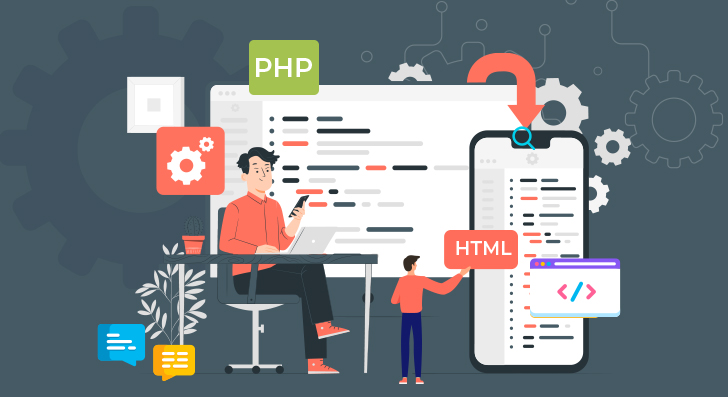The need for rapid application development to transform unique ideas into functional, market-ready solutions in record time has never been more pressing. However, software startups are often challenged by limited resources, tight timelines, and the ever-changing nature of their products and market dynamics. This is where Low-Code development steps in as a game-changer by bringing a paradigm shift in the realm of rapid application development, propelling software startups to new heights of growth, innovation, and success. From its innate potential to expedite development cycles to the democratization of app development, low-code has emerged as a game-changing catalyst for software startups striving to navigate the complexities of the modern business landscape.
For decision-makers at the helm, it’s important to note that the global market size for low code development platforms is estimated to reach 138.8 billion Euros by 2030 at a double-digit CAGR of 27.8%. What’s more interesting to note is that low-code will be accountable for more than 65% of application development activity by 2024. Furthermore, these platforms can expedite the application development speed by a factor of 10, resulting in a significant reduction between 50%-90% in the time required to build custom business solutions as compared to traditional app development. This indicates the transformative potential of low-code mobile application development platforms that not only elevate startups’ agility to innovate and iterate rapidly but also foster a culture of continuous growth, ensuring a competitive advantage in the crowded market landscape.
Why You Should Consider Low-code App Development
4 Key Considerations for Software Startups when Choosing a Low-code Platform
1. Review Cost and Licensing
Startups have limited financial resources, which in turn, makes cost a critical consideration. Balancing features and functionality within a limited budget is a significant challenge for startups. It’s important to understand the app development platforms’ pricing models and licensing fees since each platform has a different price and charge based on the number of end-users, features, subscription costs, development scale, and so on. Evaluating the licensing cost can be helpful in choosing the right platform tailored to unique business requirements.
2. Ease of Use and Learning Curve
Software startups are always in search of a platform that not only allows rapid application development and deployment but also offers a shallow learning curve. It is important to note that complex app development platforms with steep learning curves can hinder development and time-to-market. CTOs, CIOs, and other key decision-makers need to prioritize platforms that are easy to use and enable quick onboarding for development teams.
A CIO’s Guide to Low-code Platform Selection
3. Vendor Lock-in Risk
When choosing a platform for rapid application development, startups need to carefully evaluate vendor lock-in policies to mitigate the risk of being overly dependent on a particular platform vendor. In other words, overreliance on a specific vendor may not only limit the startup’s flexibility but also increase long-term costs. CTOs, CIOs, and other decision-makers need to assess exit strategies, contractual terms, and data portability options to mitigate the vendor lock-in risk.
4. Resource Constraints
A limited team size in startups can affect operational efficiency, resulting in extended project timelines and delaying the application development cycle. CTOs, CIOs, and other decision-makers need to execute contingency plans to mitigate such risks whilst ensuring timely delivery.
The operational throughput of a startup is contingent on a rapid application development platform that empowers citizen developers to craft bespoke applications with little or no training.
Should You Opt for Low-code for Application Development
The Key Benefits of Low-code Platforms for Rapid App Development
1. Faster Time-to-Market
Low-code development platforms come with a visual drag-and-drop interface and pre-built components that significantly cut down on development efforts. This leads to faster application development cycles, allowing software startups to quickly deploy their solutions to market and gain a competitive edge over the established organizations that undergo multiple rounds of approvals, resulting in delays in the launch.
2. Agility and Adaptability
Startups thrive on agility and adaptability. Low-code platforms enable rapid prototyping and quick iterations, allowing startups to quickly adapt to market changes, user feedback, and evolving business requirements. In other words, it allows software startups to quickly pivot or fine-tune their applications to cater to technological advancements, emerging trends, or shifts in user preferences. This level of agility and adaptability is critical to meet dynamic market needs and stay ahead in the rapidly evolving startup landscape.
3. Flexibility and Customization
Though pre-built components accelerate the development speed, low-code platforms offer a high degree of flexibility and customization. Startups can tailor their applications by modifying and extending the pre-built components to meet unique requirements, ensuring a solution that not only fits into their business model but also aligns seamlessly with their vision, functional requirements, and brand identity.
4. Improved Customer Experience
The ability to make real-time adjustments and iterations based on user feedback translates to an enhanced user experience. In other words, real-time modifications ensure that the application seamlessly aligns with customers’ changing needs and desires. Startups can deliver user-centric applications with low-code platforms that cater to specific needs, which in turn, drives customer satisfaction and loyalty.
The 5-Step Guide for Low-code Application Development
3 Real World Examples of App Development with Low-code Platforms
Customer-facing Apps: It is widely used for the development of customer-facing applications, such as customer portals, e-commerce sites, and mobile applications. Some popular examples of customer-facing applications are Salesforce Community Cloud – a customer engagement platform and Shopify – a leading e-commerce platform.
Internal Workflow Apps: It is also used for developing internal workflow applications, including project management platforms, marketing automation tools, and HR management systems. Some popular examples of internal workflow apps are Marketo – a marketing automation platform and Workday – a human capital management platform.
Rapid Prototyping: Ideal for rapid prototyping and testing of new application ideas. Some popular examples are OutSystems and Zoho Creator.
Summing Up
In the dynamic and fiercely competitive landscape, low-code is not merely an option; but a key enabler that empowers software startups to embrace the future of mobile application development. It fosters a collaborative environment where innovation is encouraged, ideas are nurtured, and applications are tailored to meet the evolving business requirements. If you are also planning to harness its potential to drive productivity, fuel innovation, improve agility, adaptability, and customer experience, and accelerate time-to-market, you may consider partnering with a reliable rapid application development company.






